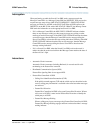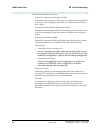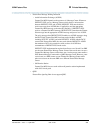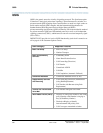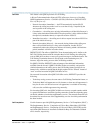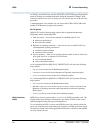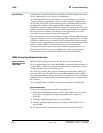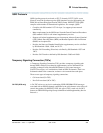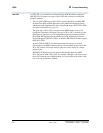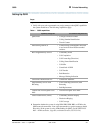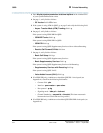
QSIG
365
Administration for Network Connectivity
555-233-504 — Issue 1 — April 2000 CID: 77730
B Private Networking
Other QSIG Centralized Messaging
With a QSIG centralized messaging system, the remote switch is called a served user
switch. When an AUDIX system supports a QSIG network, the served user switch
does not need to be a DEFINITY ECS, but the host, or message center, switch must
be.
QSIG allows a DEFINITY switch to be a served user switch of a non-DEFINITY
message center switch. Therefore, the messaging system connected to the message
center switch can serve the DEFINITY switch if that messaging system has a QSIG
interface. Octel Serenade is such a messaging system.
The users on a served user switch in a QSIG messaging network may use only one
message center. However, the message center switch may served multiple served user
switches, via DCS as well as QSIG.
What you get with QSIG Centralized AUDIX
•
Calls to users on a remote PBX cover or forward correctly and are answered by
AUDIX.
~ With a personalized greeting
~ With appropriate busy or not available greeting, depending upon the reason the
call was redirected
~ Caller can leave a message for the called party
• Once a subscriber logs into AUDIX (by dialing the AUDIX number and entering
the extension and password), the subscriber can perform the following activities:
~ Listen to or delete messages (voice, fax, or text)
~ Leave a message for other subscribers on the same AUDIX without calling
them
~ Forward a message to another subscriber on the same AUDIX
~ Access the AUDIX directory to address a message (*A)
~ Access the AUDIX directory to find a subscriber’s extension (**N)
~ Record or change your greeting
~ Transfer out of AUDIX (*T or 0)
• Message Waiting Indication (typically a lamp, but may be a stutter dial tone or
display) indicates the presence of new messages.
I
If another vendor’s switch, acting as a served user switch, does not provide this
functionality, the call will not cover properly to a DEFINITY ECS message center
switch complex.
• When a remote subscriber logs in to AUDIX from the subscriber’s phone, the
subscriber does not need to enter his or her extension. Instead of entering the
extension, *, the password, and *, the subscriber can enter *, the password, and
then #.
What you
do not
get
•
Leave Word Calling does not work between served user switches, though users on
the same switch can use it.
• Transfer into AUDIX does not work from a served user switch.



